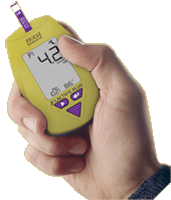BASE FITNESS (Pre Competition)
This is generally a phase of some very low intensity running. It's used to build mileage before any serious training begins. Mileage may get pretty high in this phase, but the quality will not often get you to a peak result. For me, this is the most interesting point to test yourself, because it is a true starting point of sorts which can be compared from season to season or year to year.
While racing, the runner will often feel kind of sluggish, no power up hills, and probably lack a strong finish. I think it's hard for people to swallow the fact that they will be trying hard, but will most likely not even be close to their personal best even though they may be putting in 100 miles a week. It seems like you're doing a bunch of work for nothing. If an athlete is already hitting PR's in this phase, they are probably going to have a fantastic season once some faster training gets thrown into the mix.
I prefer athletes do a race at the end of their base phase to get a nice starting point of their fitness. If 50 miles per week gets you to 'X' time for a half marathon, then some slightly more intense workouts should improve on that by a significant amount.
COMPETITION PHASE
This is where the more intense workouts begin. They should start with non-specific and work their way to specific for the goal event. I would recommend an individual test themselves every three or 4 weeks to make sure they are not overdoing things and hopefully start getting used to that uncomfortable feeling toward the end of a race.
The first race or two should feel stronger than your race in the Base phase, but will most likely not have a great finish. It may take 3 or 4 races to feel like you can push the end of the race as opposed to feeling like you want to stop. Racing takes practice. A more advanced runner may take more races to hit a peak than a beginner or novice.
It's very important to pay attention to how you feel in various stages of a race while in this phase. Not every consecutive race will be faster, but they should be pretty close in time on similar courses and in similar weather. There will be a noticeable difference in how you feel toward the end of the race at the end of the Competition Phase.
MEASURING POINTS
From season to season, it's important to look back on the time you ran at the end of your Base period. It will usually be pretty close every time. Not usually a super fast time, but it is always a good way to figure out the proper intensity to begin workouts and it's fun to watch yourself progress every few weeks. Here's a summary of what to look for in your training phases:
BASE
- Test yourself at the end of 4 to 12 weeks of building mileage.
- Get mileage as high as possible.
- Expect a slow time. There's nothing wrong with you, it's supposed to look a little rusty.
COMPETITION
- Race Every 3rd of 4th week after the Base Phase
- Monitor the point (mile marker) in the race in which you start fatiguing
- Expect some decent improvement toward the end.
- Realize that race fitness is different than base fitness.
PEAKING
- Expect to do only 3 races or less
- Race finishes should feel strong
- Your goal race should be your peak race



